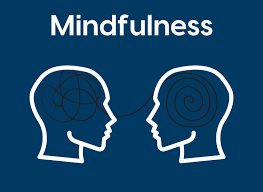
Mindfulness Meditation: A Path to Inner Peace
Mindfulness meditation is more than a trend; it's a scientifically-proven practice that can transform your mental and emotional well-being. This comprehensive guide explores the depths of mindfulness meditation and its practical applications in daily life.
The Science Behind Mindfulness
## Neurological Benefits:
- Increased gray matter density
- Reduced activity in the default mode network
- Enhanced emotional regulation
- Improved focus and concentration
- Better stress management
- Strengthened immune system response
## Core Principles of Mindfulness:
- Present Moment Awareness
- Non-judgmental Observation
- Acceptance of What Is
- Gentle Curiosity
- Compassionate Attitude
## Practical Mindfulness Techniques:
1. Breath Awareness Meditation
Step-by-Step Guide:
- Find a comfortable position
- Focus on natural breathing
- Notice the sensation of breath
- Gently return attention when mind wanders
- Practice for 5-20 minutes daily
2. Body Scan Meditation
Process:
- Lie down comfortably
- Focus attention on each body part
- Notice sensations without judgment
- Progress from toes to head
- Practice relaxation with awareness
3. Walking Meditation
Guidelines:
- Choose a quiet path
- Walk slowly and deliberately
- Notice the sensation of movement
- Coordinate breath with steps
- Maintain present moment awareness
4. Mindful Eating
Practice:
- Observe food appearance
- Notice textures and aromas
- Eat slowly and consciously
- Experience each bite fully
- Express gratitude for nourishment
## Incorporating Mindfulness into Daily Life:
### Morning Routine:
- Start with 5 minutes of meditation
- Mindful morning stretches
- Conscious breakfast eating
- Gratitude practice
### Throughout the Day:
- Mindful breaks between tasks
- Conscious breathing during stress
- Present moment check-ins
- Mindful movement and exercise
### Evening Practice:
- Reflection on daily experiences
- Gentle yoga or stretching
- Meditation before sleep
- Gratitude journal
## Common Challenges and Solutions:
1. Restless Mind
Solution: Use anchoring techniques like counting breaths or body sensations
2. Time Constraints
Solution: Start with short sessions and integrate mindfulness into daily activities
3. Physical Discomfort
Solution: Explore different positions and props for comfort
4. Loss of Focus
Solution: Use gentle reminders and multiple attention points
Remember: Mindfulness is a journey, not a destination. Start where you are and build your practice gradually with patience and self-compassion.